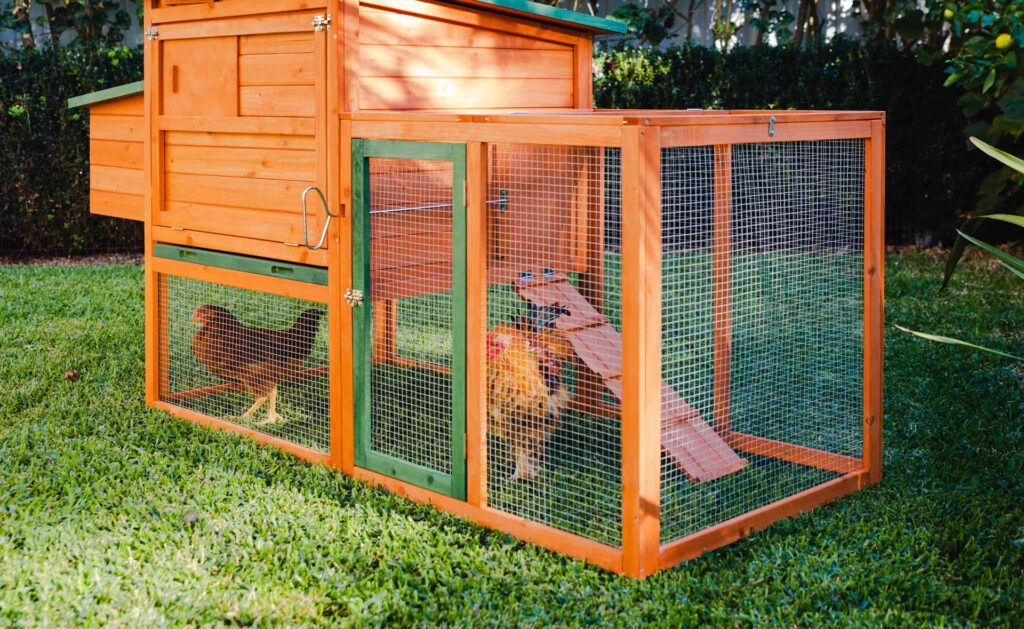
It’s important to keep your chickens warm in winter, but not by using brooders or dressing them up in sweaters. Instead, knowing how to insulate a chicken coop for winter is all you need to keep your birds safe and comfortable in the coldest months.
It’s true that, unlike you or me, chicken don’t mind cold weather too much. They have a layer of soft downy feathers underneath that keep them warm even when outside temperatures are below freezing. However, chilly winter drafts and moisture can take away this protection and cause bad cases of frostbite.
A winterized chicken coop is one that is protected from both these elements through adequate insulation. Getting the best chicken coop for your birds ensures that insulating it becomes easier. Without adequate protection from the elements, your birds will soon start to show signs of illness.
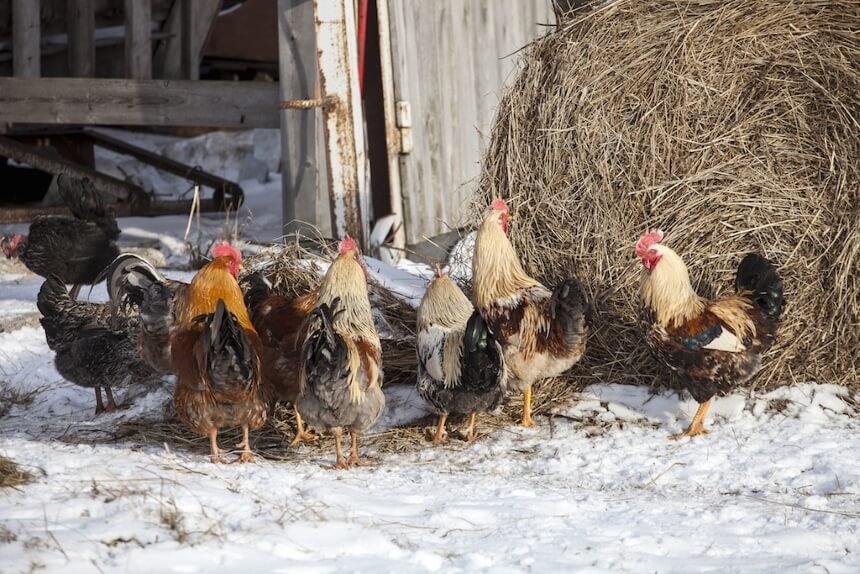
The first sign that your chickens may be cold is a change in behavior. Happy and healthy chickens are curious, energetic, and bright-eyed. When cold, chickens become stressed and huddle together. They tend to fluff up and stand on one leg, keeping the other tucked up for warmth.
Under more severe weather, chickens will suffer from frostbite on their comb and feet. These are their most vulnerable parts, which is why they also hide their heads in their feathers to reduce exposure.
Signs of frostbite include blackened areas on the comb, wattles, or toes. These dead parts will eventually fall off, so you need to arrest frostbite before it occurs.
One way to prevent frostbite in chicken is to feed them high-calorie foods such as corn (make sure it’s non-GMO), wholemeal oats, and mealworms to increase their internal body temperature. Check out our review of the best chicken feed to help you get started on this.
Frostbite occurs mostly from moisture build-up in the coop. This moisture freezes on their combs or feet, which is a big problem for the birds. This is one reason why you have to keep the chicken coop well ventilated without introducing drafts.
You should also ensure that their litter or bedding is dry and change it regularly, while also removing any water containers overnight.
When chickens get wet in winter or there is a bad draft in the coop, they can lose the protective layer of air between their downy feathers. Their body temperature can fall below the normal 105F, causing hypothermia.
A chicken suffering from hypothermia will be stiff, have eyes closed, and lie still on the ground. If you notice these signs, the bird is in critical condition and needs to be warmed up slowly and patiently.
Bring the bird inside and place it near a space heater. You can also wrap it in warm towels and blow warm air over it using a hairdryer. Resist the temptation to warm it up too quickly as this can cause shock – chicken doesn’t respond well to rapid temperature variations.
Extreme temperatures can give your chickens the flu. When your birds catch a cold, you will notice the same symptoms found in humans such as sneezing, discharge through the nose, and coughing. They will also have reduced appetite and stop producing eggs.
Technically, flu in your chickens is called Chronic Respiratory Disease (CRD.) It’s not fatal, but it may require a visit to the vet for treatment. It also reduces the bird’s immunity and makes it more vulnerable to the disease in the future.
This chicken flu is not necessarily caused by low temperatures. Typical causes include:
CRD in chicken is treated using antibiotics, but it often clears up on its own when the cause is removed.
Despite the natural cold tolerance of chicken, the temperature inside the coop should not fall below -20F (-280C). That is easily achievable by carrying out some basic insulation procedures.
A big advantage of insulating your henhouse is that it also helps to keep it cool in the summer, and you may already know that chickens suffer more in high heat than extreme cold.
Before you learn how to insulate a chicken coop, remember that the first step is to have a well-built coop. That means using sturdy materials and insulation to make the walls and roof to prevent heat loss in winter.
Or, you can simply buy a prefabricated coop such as the Best Choice 80” multi-level chicken house. Made of solid fir wood, this solid coop has no loose spaces around the windows, door, or between the wooden slats and makes insulation a breeze. With a properly constructed coop in hand, it’s time to get down to business.
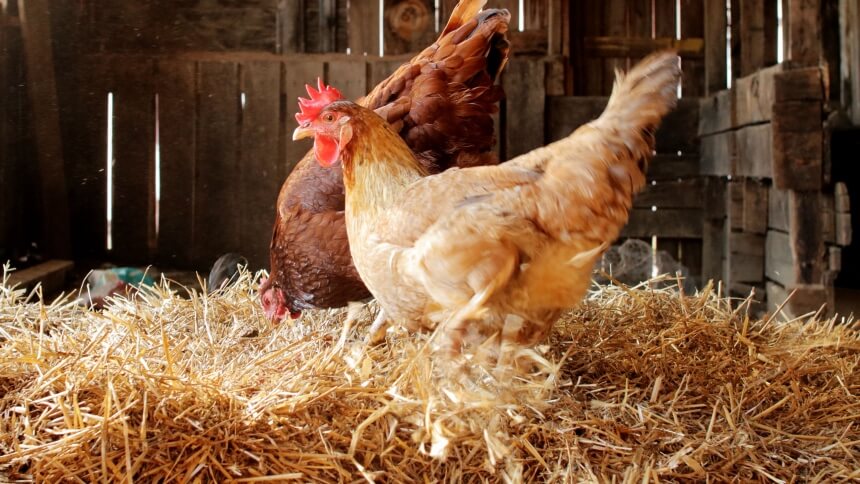
For this method to be effective, you will want to use a thick layer of the stuff – about 10-12 inches deep. Your chicken will naturally tramp down on it, so you will also have to top it up regularly through the winter.
Straw is also an excellent wind barrier for the walls of the coop. If you have some drafts coming in and have some space for it, you can stack up bales of straw against the walls of the chicken house to act as a wind barrier.
A big disadvantage of using straw is that it tends to retain moisture a little too well, which can turn out to be a problem with frostbite and mold. Make sure to check on the condition of your chickens’ feet once in a while to ensure that there are no black frostbite spots.
Unless you have a double-walled and insulated chicken coop, chances are that there are still some chilly drafts coming in. These could be a result of holes in the walls, around windows, or doors.
Whatever the reason, you can stop these drafts by fixing a sheet of tarp, plastic sheeting, cardboard, or a piece of wood to prevent it. This stop-gap measure won’t add any insulation, but it will stop winter drafts from getting in.
If you are using sheets of tarp or plastic, you can simply hang them up vertically all around the coop to stop any drafts and form a protective layer of air around. Again, make sure to leave any vents open to allow air to circulate freely.
If you opt to build your own chicken coop, one of your biggest considerations will be how to protect it against the elements. Using wood or plywood, you can elect to construct exterior and interior walls to create a pocket of insulating air between them.
You can take one step further and pack insulating material in this space such as newspapers, fiberglass, or polyurethane. This material holds the air in place and further prevents heat from bleeding out, just like the insulation in your house.
Double walls are useless if the chicken run, windows, and ventilation ducts allow heat to escape. To deal with them, make sure the doors open inwards and create sliding windows and seal them properly.
Set the ventilation holes at the top of the coop, where the roof meets the walls. Keeps them away from the nesting or roosting area, and you can even go the whole distance and purchase commercial vents that allow free airflow without causing drafts inside the coop.
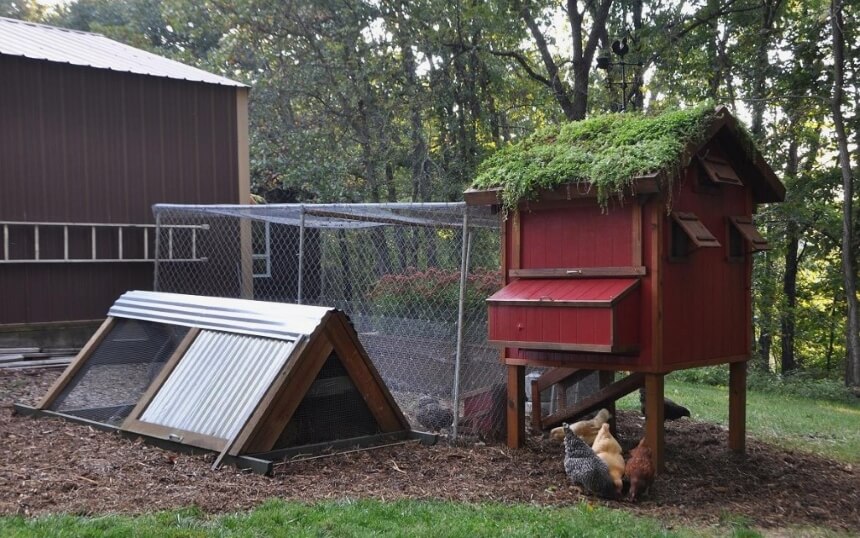
Green roofs have been getting popular for homes, but one of the best places to have one is on your chicken coop. The biggest advantage of an eco-roof is its insulating properties. The layer of dirt on top keeps the heat from the warm air inside nice and warm.
This is important because, since warm air tends to rise, the biggest source of heat loss for chicken coops is usually the roof. Plus, the plants that grow on it are useful for food and aesthetics.
It doesn’t take much more to keep your feathered ladies warm in the winter apart from a well-insulated chicken coop. However, there are some extra measures you can take to keep them healthy and comfortable.
One of the ways to winterize a chicken coop is to carry out a deep clean well before winter. If you rely on the deep litter method, you will likely have built up several layers of litter by the time winter comes around.
It’s a good idea to strip away all this old litter to remove the mustiness. The compacted litter is also less efficient at insulation than fresh litter.
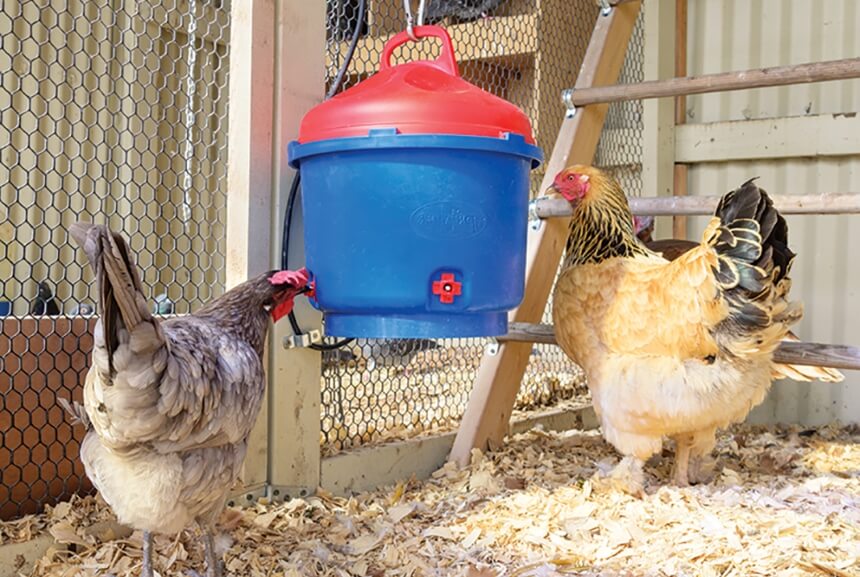
Instead of all that, you can use a winter poultry waterer with a heated base to keep the water defrosted. It keeps the water just warm enough that it won’t freeze over, which ensures a constant supply of drinking water to your chicken.
If you don’t have a dedicated winter waterer, you can use a water deicer such as this Farm Innovators deicer. The 150W heater is designed for use with all nipple-style drinkers and buckets and has a thermostat control for regulation. It is also covered with Teflon, which means that it is safe for use with plastic and has excellent corrosion resistance.
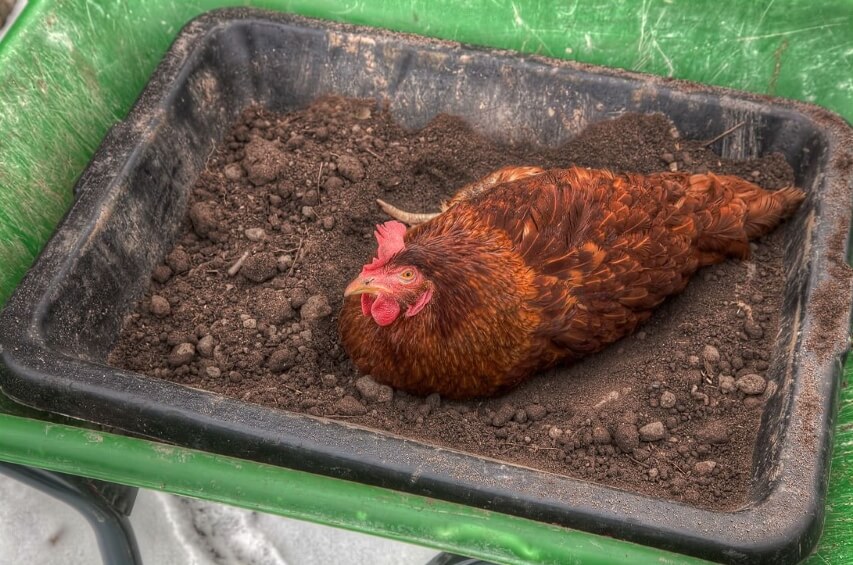
All you need to do is fill a low bucket with dirt, ash, sand, or whatever you have on hand. Just remember to keep it near a ventilated area and far away from the roost because the dust from the bath can be bad for the chickens.
As we have already mentioned, a high-energy diet is necessary to keep chickens warm in winter. They will naturally want to eat more when it’s cold to build up a higher metabolism, which ensures higher internal temperatures. Feeding them a diet high in grain and protein helps them burn more calories and thus stay warmer.
Honestly, there are very few scenarios where you need to heat a chicken coop artificially unless you have young chicks or live in a very cold area. There have been far too many cases of coop fires caused by heat lamps that got knocked over.
If you must heat the coop artificially, you need a safe solution to prevent fires. Check out our list of the best chicken coop heaters for inspiration. Ideally, oil-filled radiators would make the best solution for heating your chicken coop, but they are bulky and uneconomical to run.
Electrical heaters can be very energy-efficient for such a small space as a chicken coop. One of these is the Cozy Products 200W space heater, which is designed to be peck-proof and thus much safer than brooders.
Before we wind up, here’s a tip for you: if your chickens aren’t laying eggs during winter, its probably because they aren’t getting enough light. They need 12-14 hours of light a day Trusted Source Winter and Your Backyard Chickens - Ohioline A decline or stop in egg production is natural during the winter because chickens require 14 hours of daylight. By providing 12-14 hours of light, you will help increase egg production. To provide light for the chickens, use a 60-watt incandescent lightbulb or 13-watt compact fluorescent or comparable LED bulb that is hung at approximately 7 feet with a downward reflector. This method will provide enough light for a 200-square foot coop area. Lights may be left on continuously or turned off manually or automatically with a timer. ohioline.osu.edu , so you might need to fix the coop with some warm lighting in addition to the insulation. An incandescent bulb also produces a decent amount of warm, so that’s a plus.
Just like the wild birds you see flying around in the cold of winter, chickens are well-equipped to handle very cold weather. They aren’t weather-proof, though, so they still need some protection from the elements.
In particular, moisture and drafts are enemies of the chicken in winter. Drafts remove the layer of insulating air the birds keep close to their bodies, while moisture freezes and causes frostbite.
By learning how to insulate a chicken coop for winter, you give your birds an environment where they can weather out the cold season comfortably and safely. It doesn’t take a lot to keep chickens happy, but keeping out the biting wind and freezing rain is definitely one of them. To learn more about your chickens and how to look after them properly, visit peteducate.com.



